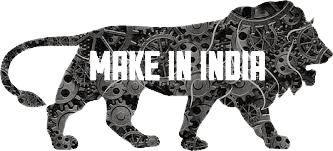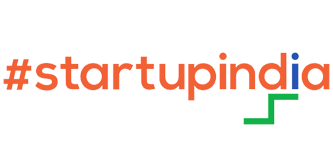What is Web 3.0? A Beginner’s Guide to the Future of the Internet
Discover how Web 3.0 is transforming the internet into a decentralized, secure, and intelligent space. This beginner-friendly guide explains key technologies, benefits, and how you can prepare for the future of the web.
“The next evolution of the internet isn’t just smarter it’s fairer, freer, and finally ours.”
The internet has come a long way. From static pages of the early days to
social media platforms today, it keeps changing. Now, a new version is on the
horizon Web 3.0. It promises a more personal, secure, and decentralized online
world. Knowing what Web 3.0 is can help you prepare for the future of the web.
This guide will break down Web 3.0 in a simple way. You’ll learn how it
differs from older versions and why it matters.
What is Web 3.0?
Definition and core
concept
Web 3.0 is the third main stage of internet technology. It focuses on
giving users more control over their data. Unlike earlier versions that relied
on centralized servers, Web 3.0 uses blockchain and other tech to make the web
more trustworthy and intelligent. The goal is to build a web that’s
decentralized, meaning no single person or company has total control. Instead,
users own their data and interact directly with each other.
The evolution from Web
1.0 and Web 2.0
Web 1.0: Think of this as the early days static pages that just displayed
information. It was a read-only web where users could visit sites but not
interact much.
Web 2.0: This is what most of us use today. It added social media, videos, blogs,
and user-generated content. But it’s also made of big tech companies
controlling most data and platforms.
Transition to Web 3.0: Now, we’re moving toward decentralization with smarter,
more flexible tools. It’s about user ownership, better data sharing, and
machines understanding information more like humans do.
Key technologies
driving Web 3.0
Blockchain and cryptocurrency: Secure digital ledgers that verify transactions
without middlemen.
Artificial Intelligence (AI) and Machine Learning (ML): Smarter tools that
understand and predict user needs.
Decentralized identifiers and peer-to-peer networks: Allow users to
control their identity and data without relying on central servers.
Semantic web and data interoperability: Making data easier for machines to read, connect,
and understand.
Core Features of Web
3.0
Decentralization and
Distributed Ledger Technology
Blockchain is the engine behind many of Web 3.0’s features. It creates an
unwritable record of transactions that everyone can trust. This reduces the
need for middlemen and makes online services more secure. Imagine making a
transaction without a bank that’s the power of decentralization. It cuts out
single points of failure and fights against fraud.
Semantic Web and AI
Integration
Web 3.0 aims for the web to understand data like humans do. It uses AI and
advanced data connections to offer smarter results. For example, search engines
could understand your intent better, giving more relevant answers. Apps might
provide personalized news or shopping suggestions based on your habits.
User Ownership and Data
Privacy
In Web 3.0, your data belongs to you. You can choose what to share and
when. It uses cryptography to protect identities and give you control. Think of
it as having your digital passport you decide who sees what. This shift makes
online privacy much stronger.
Interoperability and
Open Ecosystems
Web 3.0 encourages systems that work together smoothly. Different apps or
platforms can exchange data easily, without barriers. This openness stimulates
innovation and gives users more options and flexibility.
Key Technologies
Powering Web 3.0
Blockchain and
Cryptocurrencies
Blockchain supports decentralized apps, called dApps, that run without a
central server. Ethereum, Solana, and Cardano are popular platforms. They power
everything from Decentralized Finance (DeFi) where you can bank without a bank
to NFTs, which are digital collectibles stored on a blockchain.
Artificial Intelligence
and Machine Learning
AI makes online experiences more personal. Chatbots can answer your
questions instantly, and data analysis can help businesses target their
audience better. These smart tools help Web 3.0 serve users more intelligently.
Decentralized Storage
and Cloud Computing
Platforms like IPFS and Arweave help store data securely and permanently.
They resist censorship and data loss, making information accessible even if a
server goes down.
Decentralized
Autonomous Organizations (DAOs)
DAOs are like clubs run entirely by rules written in code. Members, using
tokens, vote on decisions and change how the organization works. This model
fosters community-led projects and fair governance.
Implications of Web 3.0
for Businesses and Individuals
Opportunities for
Innovation
Web 3.0 opens the door to new ways of doing business. You could create a
platform where users earn tokens for participation, or build communities driven
by shared goals. Personalized services will become more common and easier to
access.
Challenges and Risks
But Web 3.0 isn’t perfect. Scalability remains a problem can current tech
handle millions of users at once? Laws and rules are still catching up, leading
to uncertain regulations. Plus, smart contracts and data storage are vulnerable
to hacks if not coded carefully.
Actionable Tips for
Getting Started
Learn the basics of blockchain and crypto. Start reading beginner guides
and tutorials.
Try using decentralized apps and wallets. See how they work firsthand.
Follow thought leaders and projects in the Web 3.0 space on social media
and forums.
The Future of the
Internet with Web 3.0
Industry experts believe Web 3.0 could reshape the net we use daily. It
could make online payments faster, allow more secure sharing of health data,
and support digital identities. Mainstream adoption depends on efforts toward
easier-to-use interfaces and clearer rules. But as more companies join in,
expect a web that’s more private, smarter, and more controlled by users
themselves.
Conclusion
Web 3.0 is shaping up to be the next big step in internet technology. It
promises decentralization, smarter data, and better privacy. Staying informed
about these changes gives us a chance to participate and benefit from the new
digital world. Explore the tools and communities emerging today your future
online self will thank you.
Start small, learn constantly, and keep an eye on innovations in Web 3.0.
The internet you know is about to become a lot more personalized, private, and
powerful.



.jpg)